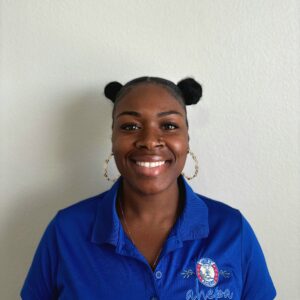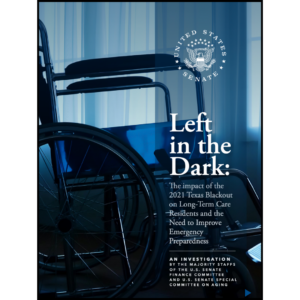Does Your Senior Care Community Have Adequate Insurance Coverage?
As the frequency and extremity of severe weather events in the United States increases, so does the risk of property damage or even total losses. Although senior care communities purchase insurance with the hope of never needing to use it, the rise in severe weather events such as wildfires and storms is leading more policyholders to file claims for property damage or destruction.
According to National Centers for Environmental Information data, from 1984 to 2004, 25 tropical cyclone, 32 severe storm, seven wildfire, 12 drought, 12 flooding, 11 winter storm, and four freeze billion-dollar disaster events occurred in the United States. But between 2004 and 2024, those events increased in frequency, with 40 tropical cyclone, 168 severe storm, 16 wildfire, 12 winter storm, 28 flooding, 17 drought, and three freeze billion-dollar events occurring.
Given the increasing rate of severe weather events, it’s essential for senior care communities to understand their policies and make sure they have adequate coverage.
Increased Weather-Related Losses

Dan Gilhooly, senior vice president of Gallagher
Dan Gilhooly, senior vice president of Gallagher, a global insurance brokerage, risk management, and consulting services company, notes that the changing weather has resulted in an increase in weather-related losses. “The biggest shift has really been an expanding scenario of events of tornados, wind-related claims, hail-related claims, flooding issues, and water damage,” he says. Since more extreme wintertime cold has been prevalent in previously unaffected areas, burst pipe damage has also become more common. Additionally, the Western side of the country has been impacted by significant wildfires.
Changes in the insurance industry are also affecting the claims process. “We’re seeing a lot of insurers that have pulled back significantly on what’s covered, and have shifted how policies are responding by layering deductibles,” says Gilhooly.
For example, many insurers have lost money on increased wind and hail claims. Throughout the Midwest and Midsouth, insurers have shifted from a fixed standard wind deductible of $50,000 to $100,000, to more percentage deductibles. Now, 2% to 5% deductibles on the value of a given location, like a senior care community, are common. “If you have a $50 million building and you’re carrying a 2% deductible, you’re self-insuring $1 million on that loss,” says Gilhooly. “It’s pushed the loss that insurers are assuming back onto the client.”
What Senior Care Communities Should Know About Insurance for Severe Weather
To ensure a senior care community has adequate coverage, Gilhooly emphasizes the importance of thoroughly understanding the details and nuances of the policy. “You need to fully understand your risk profile,” he says. Identify the most critical exposure the community faces.
Deductible buy downs can reduce a community’s financial burden after a loss, but buy downs come with an additional premium, which comes at a significant cost. “Does it make sense to self-insure and roll the dice, or do you want to make sure you have this fixed expense, and are you willing to pay a little more for it?” Gilhooly poses.
He also notes the value that liability insurance offers, especially in an evacuation scenario. “You want to make sure you have an emergency preparedness program and plan in place, and that you’re protecting the wellbeing of your residents,” he says. “Have protocols set up so that you can adequately, quickly, and safely move those residents so you don’t have a liability situation come out as a result. We see a lot of that in hurricanes.”
As severe weather events contribute to financial losses for insurance providers in states like California, some insurers are reluctant to write new policies in high-risk areas. Gilhooly notes that this approach is more common, even outside of states like California or Florida, and notes that it’s important for senior care communities to review and evaluate their risk profile. “Look at it from the insurer’s point of five – if you can critically point out all the areas where you have opportunity to mitigate risk, make sure that you’re highlighting that,” he says.
If senior care communities don’t have insurers willing to provide coverage, then buying insurance can get very expensive. Gilhooly explains that through the Excess & Surplus lines (E&S) market, a specialty market that provides coverage that traditional carriers won’t offer, senior care communities can get coverage, but will likely face high premiums. “Unless you can articulate why you’re a better protected risk for that insurer, you’re going to get charged in excess on that premium,” he says. “You need to make sure from the point of submission that you’ve done the heavy lifting, and that you’ve done your own CAT modeling or risk analysis so you can answer underwriters’ questions.” For example, acknowledging your risks but demonstrating what you’re doing to close the gap on those risks can be helpful.
“Get third-party engineering done so you can send engineering reports out to the market,” Gilhooly advises. “A lot of the market is going to E&S, and these underwriters are inundated with submissions, so if they don’t have these reports, they’ll decline or charge you a higher rate to participate in the program than may be needed. Doing that work shows you’re committed to protecting the buildings.”
The Importance of Reviewing Insurance Coverage
The person managing a senior care community’s insurance and risk management program should have a general understanding of their coverage throughout the year. “At a bare minimum, it’s important to review the program at least twice a year and understand what’s potentially changing in the market,” Gilhooly says.
In reviewing coverage, it’s important to know what resources are available through your broker and insurer. “There are constantly new mitigation tactics to help you protect your property,” he says. “It’s a mutually beneficial interest for both parties.” Additionally, knowing your limits and deductibles in a given scenario can help you avoid being blindsided by a claim.
Gilhooly also highlights the importance of investing in protecting your senior care community against severe weather. While it may not be an easy conversation when looking at your portfolio and all of the potential investments you could be making, it’s important to make a clear commitment to investing in the areas of your property that need to be updated. “As things age and properties get older, we need to make sure those are kept up with the standard and up to par in being well-equipped to sustain potential weather events,” he explains. “Having a good pulse on when it’s time to make an investment could be the difference between having an eight-figure claim and paying a little bit now to mitigate that going forward.” He recommends monitoring the risk control and engineering surveys you’ve had done and recognizing when it’s time to make a capital expenditure. “General wear and tear claims are often the ones that aren’t covered,” he notes.
Preparing for Future Weather Events
“As the severity of these events continues to seemingly get worse and worse and we don’t know what the future will bring, I think it’s really important that all owners, operators, and risk managers constantly keep a pulse on what’s changing in the insurance industry and what solutions are available they can incorporate within the organization,” says Gilhooly. Staying up to date about new mitigation tactics may help senior care communities reduce the damage sustained by severe weather events, or potentially avoid having to file a claim at all.

Paige Cerulli is a contributing writer to i Advance Senior Care.
Related Articles
Topics: Disaster Preparedness , Featured Articles , Finance , Risk Management











